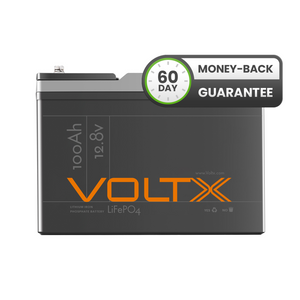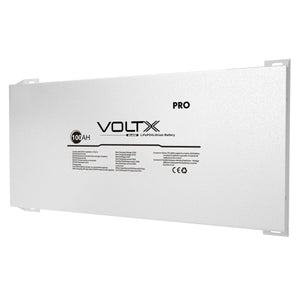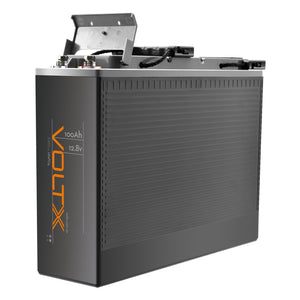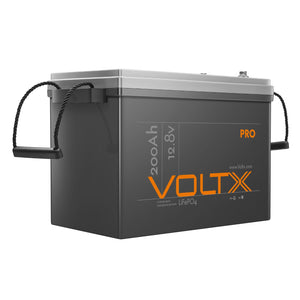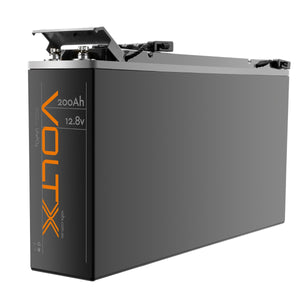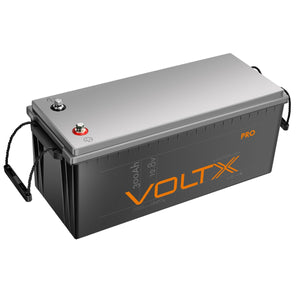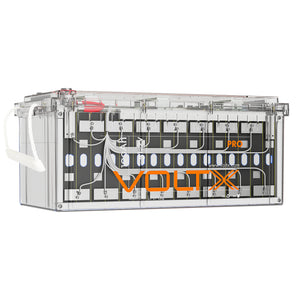A lot of first-time battery users often search the term "Ah battery" online. You would also see this label when you buy batteries whether it's a traditional lead-acid battery or a lithium battery. Some power packs would have a higher Ah rating than the others, but usually, the standard or most commonly used battery Ah level is the 100Ah battery. Avid campers or those who use batteries regularly would know this as well as battery store providers and camping stores.
This is especially true for outdoor applications. A 100Ah lithium battery for instance is just the perfect size for carting around. It's typically enough to power most camping trips since campers usually bring a few essential appliances only. Of course, it would still be best to know your power requirements before heading off to enjoy the outdoors to make sure you bring the correct amount of Ah in battery to run your electronic devices throughout your entire stay.
What Does Ah in Battery Mean?
In long-form, Ah in battery means ampere hours or amp hours. This pertains to the amount of energy charge in a power pack that allows 1 ampere of current to flow for one hour. The simpler definition of this would be that the Ah in battery determines how much capacity it has to be used for a certain number of hours.
This metric is usually used in larger batteries such as camping batteries. Smaller ones like AA or AAA batteries and portable power banks use milliampere hours to measure capacity instead. When it comes to deep cycle batteries, the amp hour rating is usually labelled as multiple C ratings. If for example a battery is rated at 5C, it should be able to provide around 26.8Ah of power for about five hours without needing a recharged.
It is also important to note that the faster you use a battery, the more its ampere hour rating decreases. This is why it's important to note not just the rated power of your appliances but also the number of hours you will be using them. You don't want to pack a 100 amp hour lithium battery to camping only to have it die before your trip ends.
Determining the Ah in battery is pretty simple too. The formula used for this is current x discharge time. For instance, if you have a battery pack that pulls 30 amps in half an hour, the computation would be:
30 amps x 0.5 hours = 15Ah
Ah in battery is displayed on the pack itself. If it's not specified, this could mean that your battery is not designed to provide continuous power in amp hours.
Is a Higher Ah in Battery Better?
Generally, a higher Ah in battery delivers more current, which means more power in watts. Having a higher amp hour starting battery means it can deliver increased cold-cranking amps (CCA) to kickstart your vehicle in cold weather. Similarly, a deep cycle battery with a higher amp hour rating-higher than the usual 100Ah deep cycle battery-can supply medium amounts of current for a longer period of time.
An increase in Ah rating also means a battery can last longer than the others, provided that they are equal in every other aspect such as run time and load. A 75Ah battery pack with 8.33 amps and 100W load would run for about 9 hours, while a 50Ah battery with the same surrounding metrics would only run for 6 hours, which is a significant difference especially if you're on an off-grid camping trip.
It all boils down to your outing's power needs. If you only need to power basic appliances, a 12V battery with 100Ah of capacity should be able to work well for you. However, if you need to power more equipment, you can try opting for a 200Ah lithium battery or even a 400Ah lithium battery instead.
How Many Ah in Battery Do I Need?
Having a good idea of how much Ah in battery you need is a must before any outdoor adventure. You want to make sure you have enough power throughout your entire trip to avoid inconveniences especially if you're staying in a remote area with no access to a mains power. Here are some easy steps to help you calculate the battery capacity for your power needs.
Step 1: List the wattage requirements of every appliance you will need and their running time
Typically, you can find the wattage requirements of appliances on their labels. List them down and put the number of hours you plan to use them, like this:
Mini fridge - 35W, 10 hours
Portable lights - 20W, 4 hours
Step 2: Multiply the wattage of each appliance with their run time to get their watt hours.
Mini fridge - 35W(10) = 350Wh
Portable lights - 20W(4) = 80Wh
Step 3: Add the watt hours of all appliances to determine the total power consumption.
Mini fridge (350Wh) + Portable lights (80Wh) = 430Wh
Step 4: Convert to amp hours
Do this by dividing your total watt hours by the battery's voltage and your ideal depth of discharge (DoD). DoD pertains to the percentage you want to drain from your power pack before charging it. Let's say for this instance that you have a 12V battery with a 0.3 DoD. The formula would be:
Watt hours / Battery voltage / DoD
430Wh / 12V / 0.3 DoD = 119AhYou now have an estimate of how much battery Ah you need.
More from Outbax
Choose from the best lithium batteries at Outbax now! We have an entire range filled with camping batteries, caravan batteries, and even boat batteries! They are available in different voltages and capacities too, so you can select the best ah battery for your adventure. Our power packs are all LiFePO4-based meaning they have a built-in BMS for optimal cell performance and automatic protection features.
Best of all, our battery prices are on the affordable side. You get quality power without breaking the bank and have your battery delivered right to your doorstep. If you want an alternative or extra source of power, we have inverter generators and solar panels for sale too. Outbax houses budget-friendly camping gear and leisure items to accommodate all outdoor lovers planning for their next trip!
